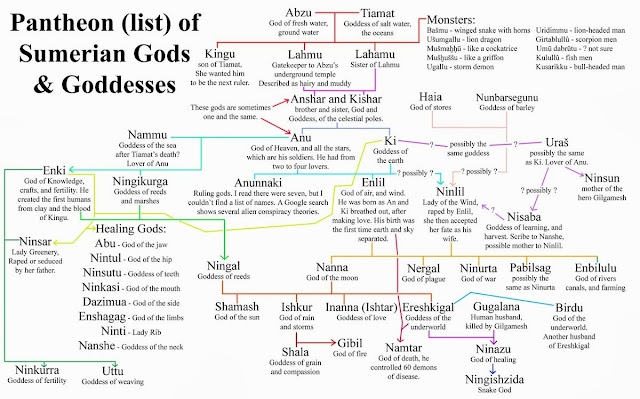Ø
Mesopotamia is the old name for
the Middle East, including Iraq ,
Iran , Syria , Jordan ,
and Israel
Ø
Mythology in Mesopotamia
is the oldest in the world, and also the most confusing. What we know about it
comes from finding pieces of tablets, often broken, that are written in
cuneiform (klinové písmo). These tablets are buried in ancient cities.
Ø
We’ve learned to read these
tablets thanks to the work of researchers, starting in the 19th century,
who translated things like the Bahistun Inscription in Iran
Written around 500 BC, it describes the life of the Persian king Darius, and is written in three languages, so all would understand. As a result, linguists were able to translate it.
Written around 500 BC, it describes the life of the Persian king Darius, and is written in three languages, so all would understand. As a result, linguists were able to translate it.
Ø
We can read cuneiform. But, the
myths are hard to put together. You might get part of the story from one
tablet, and another part from a tablet in a different city, made thousands of years later.
Imagine how much a story can change in a thousand years!
Ø
And, not every tablet described
myths. Many were legal and business documents.
This one says someone bought beer in 3100 BC
Ø
Even more complicated, Mesopotamia was not a peaceful place. It was a collection
of cities that constantly fought each other, traditionally Sumerians versus Akkadians
versus Assyrians versus Hurrians. And, every once in awhile, an entire tribe of
people (usually considered (povavažovaný) barbarians) would invade: Amorites, Hittites,
Kassites, Elamites, Chaldeans, et cetera.
Ø
What united these cultures in
terms of religion were the mythology of the Sumerians, the oldest, and longest
lasting culture in Mesopotamia . Even after the
Sumerian empire fell, their religious monuments and stories were so great that
invading cultures copied it. Priests continued to speak and write in Sumerian,
just like how Christian priests continue to study Latin today.
Ø
But it couldn’t last forever.
As new cultures invaded, they changed the names of gods, and added new ones. Towards the end there were around 3,600 different deities (božstvá). All this makes it hard to learn the mythology. It's like putting a puzzle together. Here's the best I could do, spending a day on Wikipedia:
Don't worry, you don't have to learn the names.
Don't worry, you don't have to learn the names.




This is really well done! What are your sources?
ReplyDeleteThis is really well done! What are your sources?
ReplyDelete